Celebrating its 16th edition this year, the Japan Cuts festival could not have a more fitting name. The event, presented by New York’s Japan Society, delivers an opportunity to discover and enjoy what’s happening in current Japanese cinema through a showcase that offers “slices” of flavors from a wide variety of contemporary voices, all different from each other.
As a perfect appetizer, The Fish Tale presents alternately as a kind-of-fairy tale and a biopic that takes obvious artistic licenses. On paper, it’s a biographical portrait of a celebrity famous as a fish expert, illustrator, and YouTuber, Masayuki Miyazawa. However, in this case, the real inspiration, better known as Sakana-Kun, is played by female actors. The film first follows Meebo (Mizuki Nishimura), a girl obsessed with fishes (and all kinds of marine creatures). Some classmates mock her eccentricities, while her few friends never fully understand her. Her father looks down on his daughter’s interest and resents his wife for indulging Meebo’s whims, which include serving seafood for dinner without fail or letting her visit a stranger ready to instruct her about fishes (he’s the local eccentric that other kids avoid). On a beach excursion, Meebo manages to catch a large octopus, which her father thoughtlessly kills before offering it as food. What could have been a traumatic event only increases her curiosity.
Directed by Shuichi Okita, The Fish Tale portrays the grownup Meebo (now played by Non) over several years of disappointments and failures in her quest to find something that truly connects with what she loves (installing fish tanks and running a sushi restaurant are dubious alternatives), while her friends and childhood companions are successful in their pursuits. The colorful cinematography and the whimsical spirit of the material adhere to the subjectivity of its charming and eager protagonist, who can be described as a Japanese Amélie Poulain. The film always seems on the verge of embracing the magical and extraordinary, and its beautiful final scene certainly fulfills some of those expectations, but it generally keeps those fantastical impulses at bay.
A much overwhelming and ambitious project comes in the form of the science fiction offering From the End of the World. Its narrative, visual, and emotional complexity will likely not be fully grasped in a single viewing, albeit that’s enough to be instantly dazzled and moved. Directed by Kazuaki Kiriya, the film immediately makes you want to watch it again to discover more details to better understand its ingenious mythology. It’s an apocalyptic tale where the fate of humanity depends on the dreams of Hana (Aoi Ito), a 17-year-old orphan who cannot anticipate that she possesses hidden abilities that hold the key to the planet’s future and could be used to reverse its impending doom.
Hana has recently seen her grandmother die, and she works tirelessly at a busy restaurant to support herself, leaving behind her childhood dream of becoming a professional makeup artist. At school, her only friend is a boy with a disability who harbors an unrequited love for her, and she becomes the target of a bully who extorts for money by threatening to expose an alleged secret recorded on video (a chilling revelation when discovered). Everything changes when she is contacted by a secret organization claiming that the end of the world will happen in two weeks, and that Hana is the only one who can reverse it. The key to achieving this lies in the vivid dreams she has been having, which transport her to the distant era of feudal Japan.
In the race against the days toward destruction, the great existential dilemma lies in the doubt of whether the world truly deserves to be saved. At least, that’s what a depressed teenager would consider, whose difficult life may tempt her to see the cessation of all existence as relief from her misery. The balance between the epic and the intimate is one of the film’s best accomplishments, in line with its visual flourishes (the black-and-white world of the samurais, the expressionistic splashes of blood in sequences of graphic violence). Kiriya has crafted a unique blockbuster that deserves to be discovered by a large audience.
Selected as the centerpiece of the festival, the ambitious and international co-production Under the Turquoise Sky represents a remarkable directorial debut for actor Kentaro (his Hollywood credits include Rush Hour 3 and Taxi 2). Past and present, memory and dreams, converge in a transformative journey as Saburo (Akaji Maro) feels his impending death approaching, intensified by his recollections of his days as a prisoner in a Mongolian concentration camp during World War II. There Saburo met a local woman with whom he had a daughter before losing track of what happened to them.
Filled with regrets for the memories that torment him, he also laments that the future of his corporation company will rest in the hands of party boy and womanizer Takeshi (Yuya Yagira), his only grandson, who isn’t prepared for such responsibility. The elderly CEO recognizes an opportunity when Arma (Amra Baljinnyam), a Mongolian immigrant who attempts to steal one of his horses from his ranch, is apprehended while fleeing the police, despite riding against all odds. (“You were going to ride all the way back to Mongolia?” Saburo asks him at the police station.) Instead of pressing charges, Saburo offers him a unique deal: to serve as a guide and companion for his grandson on a journey to Mongolia to locate his missing daughter. Takeshi must leave Tokyo to confront the rugged landscape of an unfamiliar world and family secrets that will push him to become, perhaps, the worthy man his grandfather hopes for as his heir.
Under the Turquoise Sky juggles the conventions of a road movie and the slow bonding stories between strangers forced to travel together. It becomes clear right away that the director has created an ode to Mongolian geography and culture, allowing the landscape, people, and customs to showcase their beauty on their terms. He contrasts it with the saturated photography of the scenes in Japan, focused on closed and lifeless offices where Saburo is slowly dying. (One might wonder, why does he wish the same fate for his grandson?) Chants around a campfire, a brief encounter with a witch performing a solitary dance, a harrowing childbirth, and the gradual stripping away of means of transportation in the rural vastness (starting with a limousine and transitioning to motorcycles, horses, and ultimately on foot) define a journey after which Takeshi will never be the same.
Kentaro focuses on the physical struggles of the adventure as much as the travelers’ subconscious, creating a couple of visually arresting surreal sequences. However, the conclusion questions the notion that every journey is a path to enlightenment. The movie also offers a welcomed look inside Mongolia. It could be for many the very first window into that country.


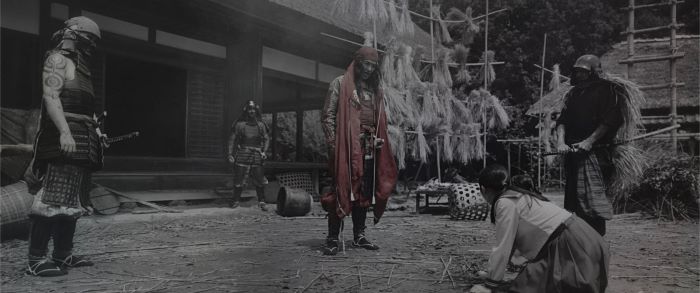
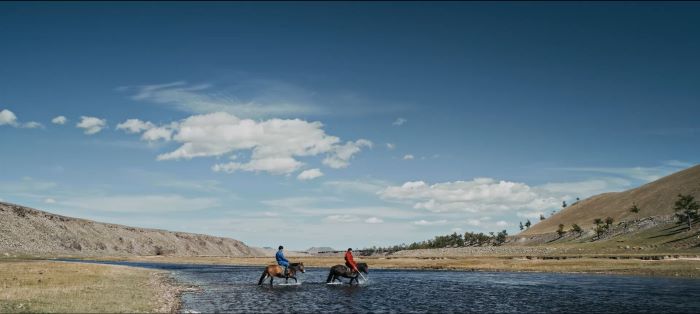








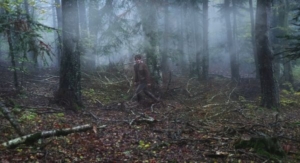
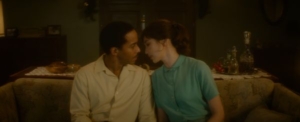




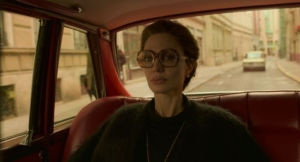
Leave A Comment